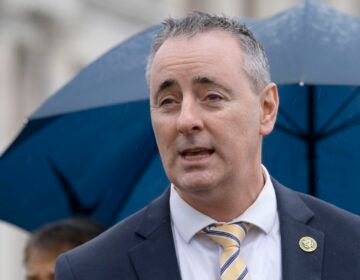What does tax reform mean?
Tax reform is like the weather. Everyone talks about it, but no one does anything about it, though all agree that the U.S. tax system is a mess, full of complexity and obscure breaks for special interests, and in need of reform.
A functioning tax system has three goals. First, it has to be simple enough to administer. Second, it has to be fair to taxpayers with widely varying incomes. Third, and perhaps most importantly, it has to collect sufficient revenue for government operations.
According to Nina Olson, the National Taxpayer Advocate, Americans spend over 6 billion hours per year trying to comply with tax filing requirements. That’s the equivalent of 3 million full-time workers doing nothing but tax compliance, which makes tax compliance one of the largest industries in America.
The majority of individual taxpayers find the job so distasteful that they hire someone else to do it. An additional 29% find it necessary to purchase computer software to do the job themselves. The monetary cost to the median individual taxpayer is more than $250 per year.
Despite this herculean effort, honest taxpayers make mistakes resulting in overpayment of tax or IRS enforcement actions for underpayment. Sophisticated taxpayers find loopholes to reduce their tax liability, resulting in widespread cynicism among all taxpayers, and reduced voluntary compliance.
The solution is for the IRS to prepare the first drafts of our tax returns for us. The IRS already has most of our information. It knows our salaries as reported by our employers, and the interest and dividends we collect. It knows what we receive when we sell investment assets, and it will require brokers to calculate gains and losses on such sales. It could also require lenders to report deductible interest collected, state and local governments to report deductible taxes paid, and charities to report contributions received.
Then the IRS could put all this information together and send us a draft tax return which we can accept or correct, in the same way that we receive a credit card statement every month, which we have to check for errors or corrections. Credit card companies collect information from millions of venders worldwide in order to provide us with monthly statements of what they think we owe. Surely the IRS can do something similar to provide us with a tax return once a year. Sooner or later it’s going to happen. Why not make it sooner?
The Internal Revenue Code itself needs to be simplified by eliminating special interest benefits and limiting deductions to those ordinary and necessary for the production of income. What deductions are not necessary for the production of income? Two of the most popular are the home mortgage interest deduction and the charitable deduction. The highest income taxpayers are the greatest beneficiaries of such deductions, both because of their greater ability to pay, and because they are in higher tax brackets from which deductions are subtracted. Removal or limitation of those deductions and similar tax expenditures in exchange for rate reductions should shift the tax burden towards higher income taxpayers while simplifying the tax code.
Professor Stanley Surrey who taught me tax law used to say that whether you believe in progressive or flat rate income taxation is like religion. You will never be able to convince those with a different view that you are right and they are wrong. Most Americans agree that those who earn more should pay income tax at a higher rate. But why then does billionaire Warren Buffet pay a lower effective rate of tax than his secretary?
The answer is the capital gains preference, which provides that income from capital is taxed at a lower rate, currently capped at only 15%, than income from labor, currently capped at 35%. Any taxpayer with significant income from dividends and capital gains will pay less in tax than another taxpayer with equal income earned from labor.
Equalizing the tax rates on income from capital and from labor would serve both goals of simplicity and fairness. And it’s possible. President Reagan in 1986 signed a tax reform law that did just that, setting the top rate for both capital gains and earned income at 28% while also reducing non-business deductions.
Our tax system produces insufficient revenue to pay for government spending, and the political debate is over whether to raise taxes or cut spending. With annual budget deficits now exceeding a trillion dollars every year and a national debt in excess of our gross domestic product, the reality is that we need to do both. Neither spending cuts nor tax increases alone will suffice. That was the finding of the Simpson-Bowles deficit-reduction commission, though both parties chose to ignore it and continue their political bickering.
The sequestration spending cuts resulting from the failure of the Congressional supercommittee to reach a budget agreement, and the tax increases which will result from expiration of the so-called Bush tax cuts at the end of 2012, are an insufficient substitute for tax reform, and fail to address simplification and fairness. But in this difficult political environment, addressing one of the three goals of tax reform is a start.
WHYY is your source for fact-based, in-depth journalism and information. As a nonprofit organization, we rely on financial support from readers like you. Please give today.




